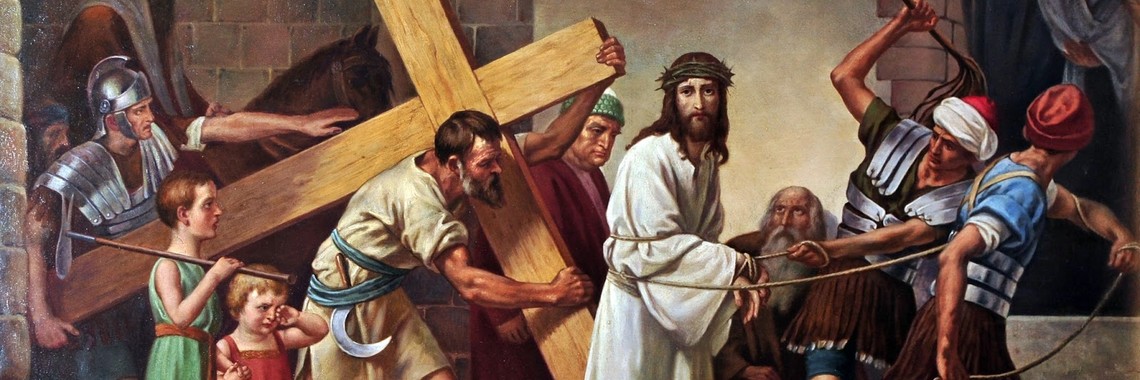Stations of the Cross
Overview
The Stations of the Cross are a 14-step Catholic devotion that commemorates Jesus Christ's last day on Earth as a man. The 14 devotions, or stations, focus on specific events of His last day, beginning with His condemnation. The stations are commonly used as a mini pilgrimage as the individual moves from station to station. At each station, the individual recalls and meditates on a specific event from Christ's last day. Specific prayers are recited, then the individual moves to the next station until all 14 are complete.
The Stations of the Cross are commonly found in churches as a series of 14 small icons or images. They can also appear in church yards arranged along paths. The stations are most commonly prayed during Lent on Wednesdays and Fridays, and especially on Good Friday, the day of the year upon which the events actually occurred. (from Catholic Online)
Plenary Indulgence offered
The Enchiridion of Indulgences, issued in 1968 by the Apostolic Penitentiary states: 63. Exercise of the Way of the Cross (Viae Crucis exercitium) A plenary indulgence is granted to the faithful, who make the pious exercise of the Way of the Cross. In the pious exercise of the Way of the Cross we recall anew the sufferings, which the divine Redeemer endured, while going from the praetorium of Pilate, where he was condemned to death, to the mount of Calvary, where he died on the cross for our salvation. The gaining of the plenary indulgence is regulated by the following norms: ;
1) The pious exercise must be made before Stations of the Cross legitimately erected. The stations of the cross at St. Thomas Aquinas were canonically erected by His Eminence James Francis Cardinal Mcintyre, the 2nd Archbishop of Los Angeles, in 1963.
2) For the erection of the Way of the Cross fourteen crosses are required, to which it is customary to add fourteen pictures or images, which represent the stations of Jerusalem.
3) According to the more common practice, the pious exercise consists of fourteen pious readings, to which some vocal prayers are added. However, nothing more is required than a pious meditation on the Passion and Death of the Lord, which need not be a particular consideration of the individual mysteries of the stations.
4) A movement from one station to the next is required. But if the pious exercise is made publicly and if it is not possible for all taking part to go in an orderly way from station to station, it suffices if at least the one conducting the exercise goes from station to station, the others remaining in their place. Those who are "impeded" can gain the same indulgence, if they spend at least one half an hour in pious reading and meditation on the Passion and Death of our Lord Jesus Christ. For those belonging to Oriental rites, amongst whom this pious exercise is not practiced, the respective Patriarchs can determine some other pious exercise in memory of the Passion and Death of our Lord Jesus Christ for the gaining of this indulgence.





